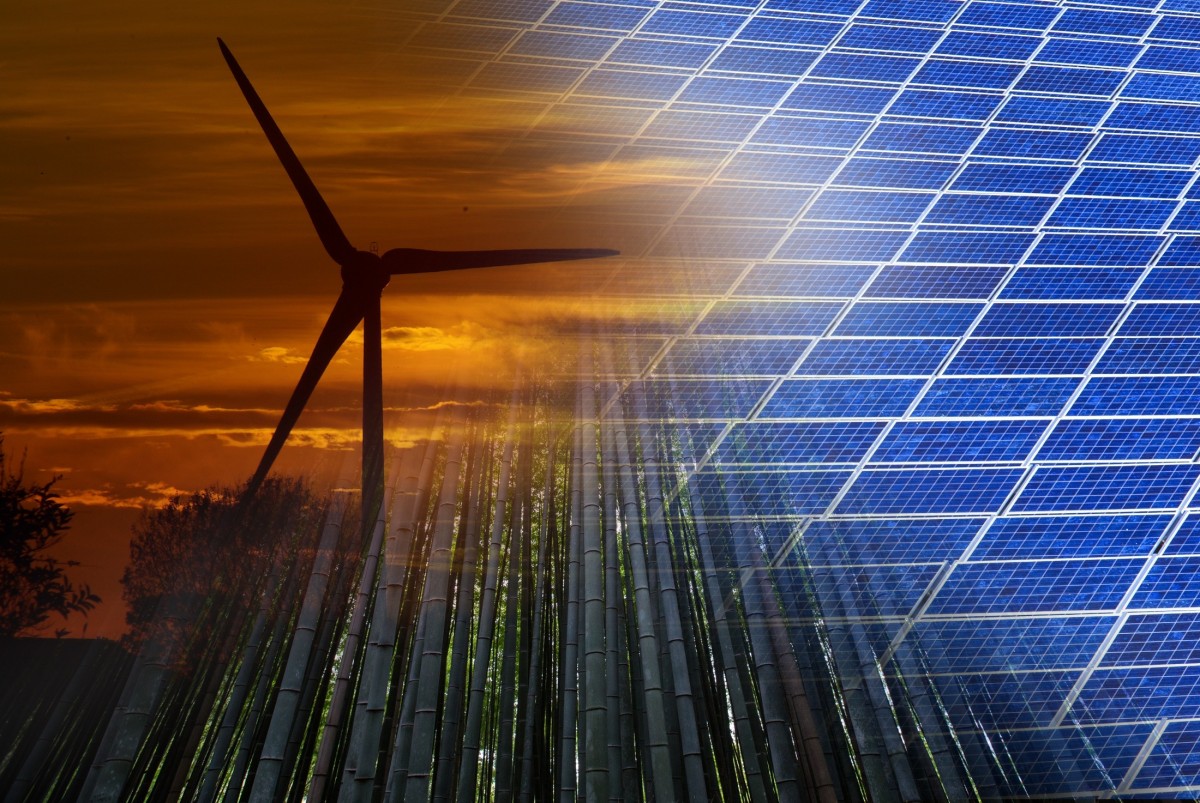
Monitoring Twitter and other social media networks may give policy makers and energy companies a chance to better communicate with citizens considering renewable energy sources. IMAGE: PXHERE
Twitter data may offer policy makers a glimpse into demand for renewable energy
Posted on April 14, 2020UNIVERSITY PARK, Pa. — Tweets could one day help policy makers and energy companies better communicate in near real-time to help customers make better sustainable energy choices, according to a team of researchers.
In a study of Twitter data from users in Alaska, researchers found that they could plot how people’s opinions changed about renewable energy over time, as well as what forms of renewable energy were more acceptable, said Somayeh Asadi, assistant professor of architectural engineering, Penn State.
In addition to being able to gauge general interest in renewable energy, the researchers were also able to examine which renewable energy sources were sparking the most conversations.
“What this means is that if we can understand people’s perceptions of renewable energy in specific regions, maybe we can use this information to educate those people about certain types of renewable energy,” said Asadi. “This could be very useful for policy makers, energy companies and governments.”
In one example of how Twitter trends could reveal renewable energy demand, the researchers noted an uptick in renewable energy-related tweets when Alaskans faced a stretch of anomalous weather patterns in 2015 through 2016. Asadi said in January 2015, 20% of the users sent energy-related tweets, 15% sent energy-related tweets in February, 23% in March and 21% in April 21%. Those figures were noticeably higher than in similar months in other two years, she added.
“In one of the more interesting results, we noticed that, in 2015, when people in Alaska were faced with an unexpectedly warm winter, they began talking about global warming,” said Asadi. “They also began to discuss why they needed to switch from fossil fuel sources to more renewable and sustainable energy resources to make sure that they are not facing the negative effects of global warming and climate change in the future.”
Wind and solar energy
The researchers also noted an increase in conversations about solar energy soon after the Department of Energy issued a report on the advantages of using solar energy in northern latitudes in 2016, according to the researchers. Based on the tweets, wind and solar energy seemed to be the most popular forms of renewable energy among Alaskans, they added.
Convincing more people to use renewable energy sources could have a broad impact on creating a more sustainable society, said Asadi.
“Researchers have found that energy plays a significant role in the food-energy-water nexus, and, if people could just use more sustainable sources of energy, this would help make the whole system — this entire nexus — more sustainable,” she said.
According to Asadi, the researchers chose to study trends in Alaska first because energy issues are extremely important to the state’s residents.
“Even though they have lots of natural resources — oil and natural gas — Alaskans are in a dire need of energy. It’s very expensive there compared to other states,” said Asadi. “That’s why we focused this study on Alaska.”
The researchers are currently working on studies to examine Twitter trends on renewable energy sources in other states.
Less expensive than surveys
Studying Twitter activity may serve as a less costly, time-saving way to measure demand for renewable energy, according to the researchers, who reported their findings in a recent issue of Renewable and Sustainable Energy Reviews.
“Using surveys and interviews to measure attitudes and perceptions of renewable energy can be expensive, time-consuming and labor intensive, but we found that people were using Twitter to get a better understanding of perceptions and attitudes in other domains,” said Asadi.
In addition, because Twitter users are signaling their interest in real time, policy makers would be able to be more responsive in providing timely information to possible renewable energy customers information.
The team examined Twitter data from 2014 to 2016. Because the data included the geographic source, the researchers could identify tweets that originated in Alaska.
To determine the level of discussions about renewable energy sources, the researchers created a list of 83 keywords related to the sources, for example, sun, wind and dam. A machine-learning technique was used to derive the opinion of the tweets, for example, whether the tweet was positive or negative about the renewable energy source.
Moloud Abdar, doctoral student, Deakin University; Mohammad Ehsan Basiri and Shahla Nemati, both assistant professors of computer engineering, Shahrekord University and Junjun Yin, research associate at the Population Research Institute; Mahmoud Habibnezhad, post-doctoral scholar in architectural engineering; Guangqing Chi, associate professor of rural sociology and demography and public health sciences, all of Penn State also worked with Asadi on the study.
The Penn State Social Science Research Institute, the Penn State Institute for Computational and Data Sciences, the National Science Foundation, the United States Department of Agriculture and the Eunice Kennedy Shriver National Institute of Child Health and Human Development supported this work.
